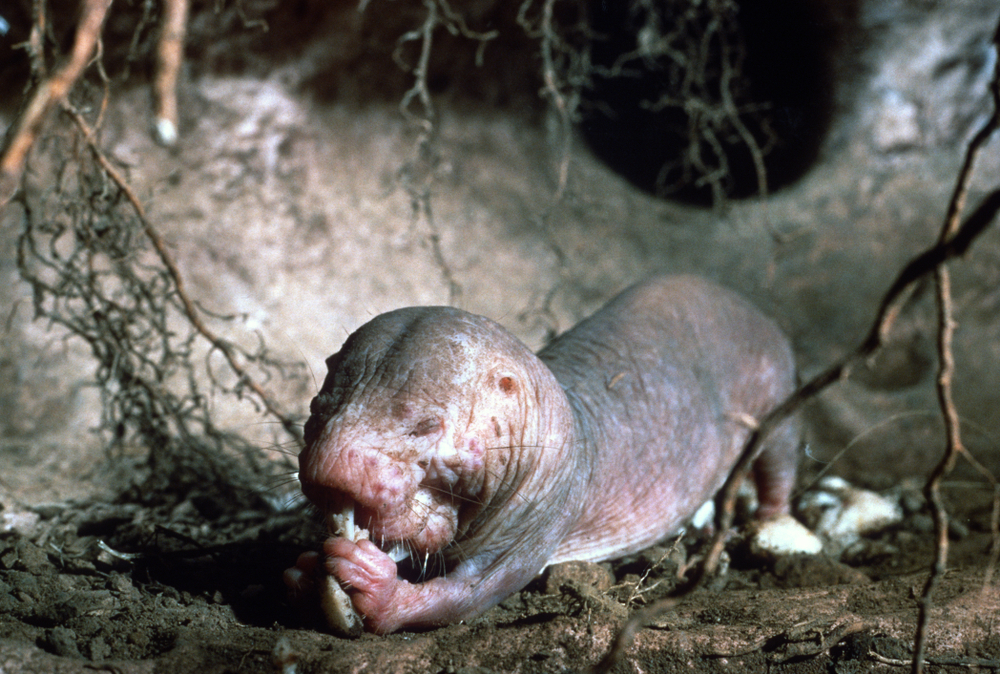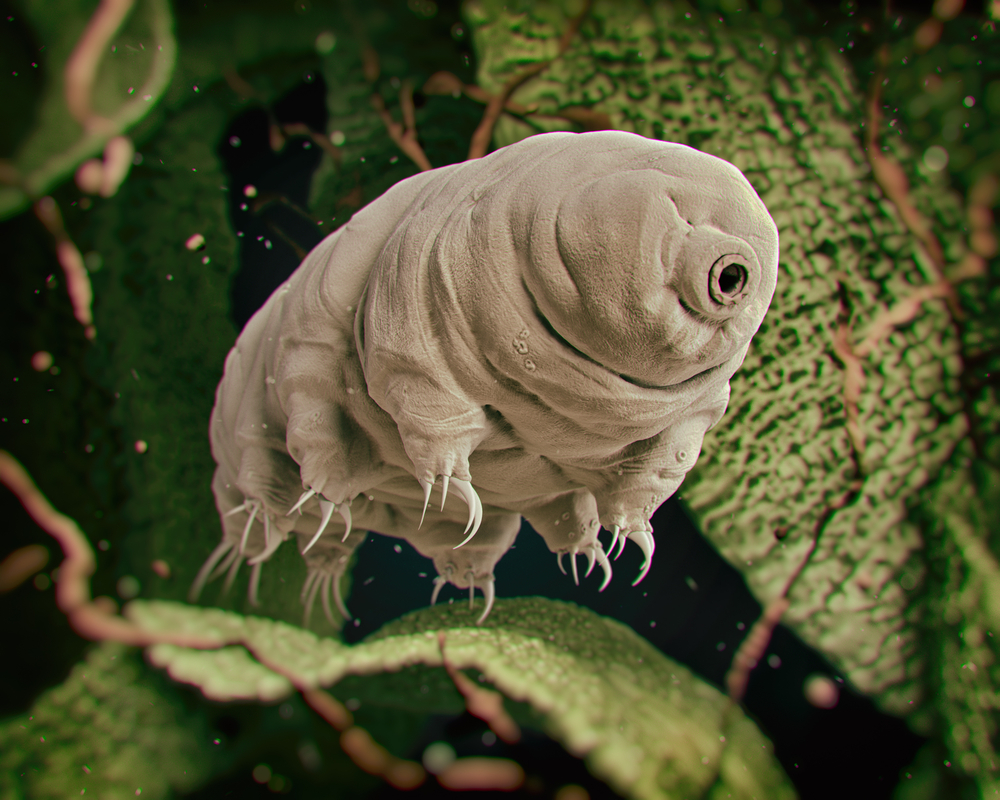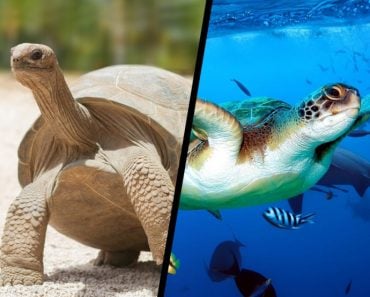Table of Contents (click to expand)
When you compare the lifespans of different animals, you’ll see a whole spectrum, ranging from ‘Speed dating’ mayflies that live (and love) for a mere 10 minutes, which is just long enough for them to mate and reproduce; to long-lived species that are perfectly alive at a mind-boggling age of 11,000 years.
Why are some animals blessed with longer lives than their close relatives? Even though we share 99% of our DNA with chimpanzees, we live twice as long as our closest primate relatives. A naked mole rat lives for more than 28 years, but a house rat can barely survive past the age of 3.
It all comes down to a few genetic and metabolic tricks. From the judicious use of energy to maintain bodily functions, to infinite DNA repair, there are quite a few animals with anti-aging superpowers.
Some wild bats exceed their expected lifespans, lobsters only grow stronger with each passing year, and the slow metabolism of turtles favors their long lives. The prolonged lifespans of tiny animals like naked mole rats, as well as humongous creatures like elephants and whales, are unlocked thanks to certain special cellular functions.
Recommended Video for you:
Why Do Animals Get Old And Wrinkly?
Aging is pretty complex, considering that there are well over 300 theories out there trying to decipher it. Moreover, age being multifactorial and particularly distinct to each species does not make it any easier. However, if it were to be put simply, aging, also known as biological senescence, is the continuous degradation of an organism’s body. The body tends to collect this molecular damage over time, making it more likely to meet its end.
Sagging skin, greying hair, and creaking bones are all signs of aging. These signs indicate that our proteins and other biomolecules are no longer “good as new”, which puts us at increased risk of diseases. However, there are some animals that don’t have to fret about these things, at least not for the greater part of their impressively long lives.
How Do Some Animals Manage To Live As Long As They Do?
Lobsters And Telomerase
Lobsters skip old age all together. As long as they’re not hunted or eaten, they will continue to live on. These animals have a cellular fountain of youth in their cells and their DNA can repair itself endlessly; even their limbs will grow back, if severed.
American lobsters have infinite telomerase enzyme in their cells. This enzyme can extend telomeres, which are cellular structures that cause cell death when they’ve aged enough.

Turtles And Energy Consumption
Turtles manage to live for so long by not being very energetic. They manage to sustain using very little energy from food and using that energy very slowly. They also conserve energy when they hibernate. Additionally, as cold-blooded animals, they hardly have to break into the energy bank when it comes to keeping themselves warm.

Naked Mole Rats And Cellular Repair
Talking about genetic tricks for aging, naked mole rats pull some of the best ones out of the bag. Their ribosomes, the structures that help to assemble proteins in cells, are exceptionally accurate. They hardly ever cause errors, making only one-tenth as many errors as a normal ribosome in a human. These rats have also lucked out with plenty of chaperones in their cells, which help in the proper folding of proteins. These processes enable their bodies to make fewer mistakes that could lead to senescence.

Large species, like whales and elephants, reap the benefits of well-conditioned cellular machinery, as their DNA tends to be better maintained and is less prone to errors. The reason for their long lives might be their youthful chemical tags, called methyl groups, which help to turn their genes on and off. This process activates the genes that were intended to be turned on, thereby accurately controlling gene activity.
In smaller organisms, these tags start to become more inaccurate and random as the individual ages, rendering their gene activity imprecise. However, the tags in large organisms take their own sweet time in degrading, so they perform their functions correctly for a long time.
Large animals, by virtue of being large, also don’t get preyed upon often, making them less susceptible to death by predation.

Animals That Defy Death
Forget anti-aging, some animals don’t bother with dying at all.
Turritopsis Doohmii – The Immortal Jellyfish

One such eternal wonder lives in the sea. The Turritopsis doohmii is better known as the immortal jellyfish, and can literally reverse their aging process when they feel under the weather or have been injured. They do this by turning themselves into their polyp or younger self, spending three days working on this transformation.
Deinococcus Radiodurans
Coming back to life after you’re dead and gone? Sounds bizarre… but it’s child’s play for Deinococcus radiodurans, a poly-extremophilic bacterium. It may not be an animal, but it deserves a mention. It has a DNA repair response so good that it resists even 3,000 times the amount of gamma radiation that could kill a human. There’s a very good reason that these organisms hold the Guinness World Record for the world’s toughest bacterium.
Tardigrade

Are there any animals that can do this too? You bet! Specifically, an 8-legged micro-animal, known as a tardigrade, ‘water bear’ or ‘moss piglet’, are invertebrates that are immune to anything that tries to destroy them. They are capable of bringing their metabolism to a complete halt, extending their lives infinitely, even in space!
Deep-sea Corals
A deep-sea coral, Monorhaphis chuni, is by far the animal (yes, corals are animals!) with the most candles on its birthday cake. They can live up to a staggering 11,000 years, a lifespan no other animal can even come close to. The reason these corals live for so long is because they stay in their safe spot and let life come to them instead. Their sustenance, in the form of flowing water, brings oxygen and food along with it. Also, corals are clonal, which means that they are made of identical units. So if some units die, new units will take their place, resulting in an endless cycle of renewal.
Closing Thoughts
Clearly, animals have a whole bunch of anti-aging tricks up their sleeves, but can we determine how long they’ve been doing so?
If you go scouting in a jungle and stumble upon a new species, scientists can predict the duration of time that these species will live for. They use a technique that allows them to accurately determine the lifespan of any species by using data on the number of sites that the aforementioned methyl tags attach to. Typically, there are approximately 800 of these sites scattered about the genome, so an accurate estimation can be made!
References (click to expand)
- Sweeney, B. W., & Vannote, R. L. (1982, July). Population Synchrony In Mayflies: A Predator Satiation Hypothesis. Evolution. Wiley.
- Buffenstein, R. (2005, November 1). The Naked Mole-Rat: A New Long-Living Model for Human Aging Research. The Journals of Gerontology Series A: Biological Sciences and Medical Sciences. Oxford University Press (OUP).
- Brunet-Rossinni, A. K., & Austad, S. N. (2004, August). Ageing Studies on Bats: A Review. Biogerontology. Springer Science and Business Media LLC.
- J Azpuruaa. Naked mole-rat has increased translational fidelity compared .... The Albert Einstein College of Medicine
- The epigenetics of aging: What the body's hands of time tell us. The National Institute on Aging
- Amiri Roudbar, M., Mousavi, S. F., Salek Ardestani, S., Lopes, F. B., Momen, M., Gianola, D., & Khatib, H. (2021, April 7). Prediction of biological age and evaluation of genome-wide dynamic methylomic changes throughout human aging. (G. de los Campos, Ed.), G3 Genes|Genomes|Genetics. Oxford University Press (OUP).
- Immortal jellyfish: How does this species skip steps in its .... Texas A&M University
- Makarova, K. S., Aravind, L., Wolf, Y. I., Tatusov, R. L., Minton, K. W., Koonin, E. V., & Daly, M. J. (2001, March). Genome of the Extremely Radiation-Resistant Bacterium Deinococcus radiodurans Viewed from the Perspective of Comparative Genomics. Microbiology and Molecular Biology Reviews. American Society for Microbiology.
- Sloan, D., Alves Batista, R., & Loeb, A. (2017, July 14). The Resilience of Life to Astrophysical Events. Scientific Reports. Springer Science and Business Media LLC.
- Jochum, K. P., Wang, X., Vennemann, T. W., Sinha, B., & Müller, W. E. G. (2012, March). Siliceous deep-sea sponge Monorhaphis chuni: A potential paleoclimate archive in ancient animals. Chemical Geology. Elsevier BV.
- Klapper, W., Kühne, K., Singh, K. K., Heidorn, K., Parwaresch, R., & Krupp, G. (1998, November 13). Longevity of lobsters is linked to ubiquitous telomerase expression. FEBS Letters. Wiley.
- (1987) Why Do Turtles Live So Long? J. Whitfield Gibbons .... seaturtle.org












